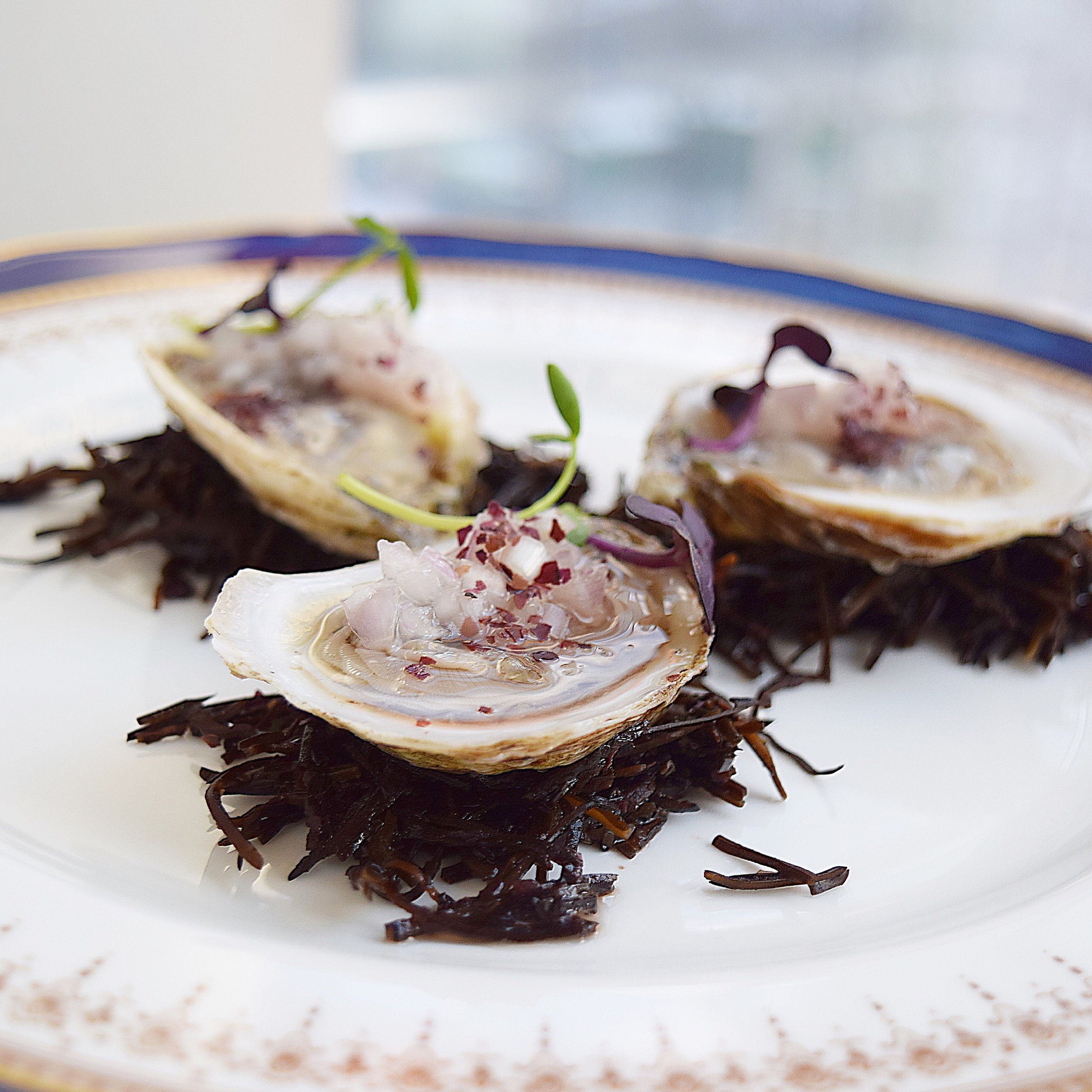Lime Ginger Coconut Cream with Poach Seared Halibut and Shiitake Mushroom
/servings 4
60 minutes
Ingredients
Sauce
Juice from 1 lime (2 tbsp lime juice)
2 garlic cloves, finely chopped
2 shallots, finely chopped 1” of ginger, finely chopped
1 jalapeño pepper, finely chopped
1/2 cup of coconut milk
1/2 cup cream
2 tsp of caster sugar
2 sprigs of fresh parsley or cilantro, finely chopped
1 tsp of corn starch, diluted with a little cold water
Fish
4 halibut fillets, 6 oz each, 2 tbsp of Grapeseed oil
1” ginger skin removed for fish
10 shiitake mushrooms sliced caps only
1 cup hydrated seaweed (Arame, Dulse, Wakame, Hijiki)
1 tbsp olive oil
1 tbsp soy sauce
1 garlic clove sliced thin
METHOD
Step 1
Place a sauce pan over a low-medium heat and add half the oil. Once hot, gently fry the garlic, shallots, ginger and chilli for 3-4 minutes. Add the coconut milk, double cream and sugar and bring to the boil.
Step 2
Whilst boiling, whisk in the diluted corn starch, and cook for 4 minutes. Lastly, stir in the lime juice and parsley. Strain if desired, before serving.
Step 3
Season filets with sea salt. Place a frying pan over a low-medium heat and add grapeseed oil and ginger root. Add filets and cook for 3 minutes. Flip and gently baste the filets with hot ginger oil. Turn down heat cover and finishing cooking 2 minutes on low.
Step 4
Place a frying pan over medium high heat add oil stir fry mushrooms till slightly brown add seaweed and garlic slivers cook 2 minutes. Remove to plate until ready to serve.
Plating
Pour the sauce into slightly dipped bowls and arrange mushroom seaweed mixture in center and top with the fillets. Garnish with fresh coastal herbs such as seaweed, samphire - alternatively you could use dill or chervil. Serve immediately




















